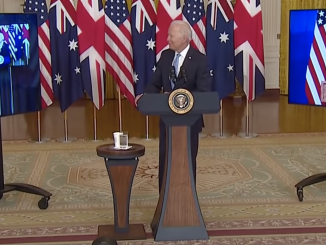
The year 2021 has seen a rapid change of scenario in India’s neighborhood with situations in Afghanistan and Myanmar getting more intense day by day. In the East, the Feb 1 military coup in Myanmar has certainly put India’s long term investment goals in the country in a state of jeopardy. And to the West, as the Taliban gain more strongholds in Afghanistan, concerns arise over the future of India’s huge investments in the country over the past two decades.
So a question naturally arises. Should India be more prudent in conducting its overseas investments? Time and again India has taken the perilous journey of investing huge sums in risky ventures in the likes of Afghanistan and Myanmar. But in the process India is yet to properly utilize their next door neighbors, Bangladesh. Although the amount of foreign direct investment (FDI) from India to Bangladesh has increased in recent years, it remains comparatively low.
Risky endeavors
Myanmar. In Myanmar, at present there are over 100 Indian companies operating in the country with investments estimated to be over $1.2 billion, according to official statements from the Indian embassy in Yangon. When Indian Foreign Secretary Harsh Vardhan Shringla and Indian Army Chief Manoj Mukund Naravane visited Myanmar last October, India declared that it will invest $ 6 billion to build a petroleum refinery in the country.
Min Aung Hlaing, the Burmese military ruler, announced in a speech marking six months following the coup that the state of emergency declared after the coup will last until August 2023. But continued political turmoil in the country certainly risks the future of Indian investments. In the past Myanmar has dealt with economic sanctions imposed by different international actors. Financial aid cuts, asset freeze, and investment restrictions have all been part of previous economic sanctions on Myanmar. Any sort of investment restrictions certainly has the probability to paralyze Indian investments in the country.
Afghanistan. In Afghanistan, India has spent $3 billion in a number of infrastructure and commerce initiatives. It has also completed over 400 projects throughout Afghanistan. The most noteworthy among these is the Afghan-India Friendship Dam project (also known as the Salma Dam project), with a capacity of 42 MW. The 218 km long Zaranj-Delaram highway project is another noteworthy mention. This highway built near the Iran-Afghanistan border provides access to Iran’s Chabahar port. Other projects include the newly built parliament building in Kabul, restoration of the Stor palace and many others. But as the Taliban continue their military offensives throughout Afghanistan, and prepare to take control of the country, India faces an uncertain situation. In case of the most catastrophic scenario, India may even lose diplomatic presence in Afghanistan.
Despite being well aware of the risks associated of investing both in Myanmar and Afghanistan, India took the ‘long way home’ and as such there are now serious doubts about the future of these investments.
Avenues unexplored
Bangladesh. In the case of Bangladesh it is often argued that much of the opportunities which can be mutually beneficial for both parties have often remained unexplored. India’s lack of farsighted attitude can be regarded as a prime reason here. India is yet to explore its next door neighbor properly. Bangladesh, despite being India’s largest trade partner in South Asia, receives only around 1% of India’s outward FDI. Bangladesh is India’s largest beneficiary of the lines of credit (LOC). But that project is also lagging behind. Since 2010, India has only given $739 million of the total $7.36 billion promised.
The geographic location of Bangladesh gives it all the important aspects necessary to become a regional economic hub. With the vast Indian subcontinent in the west, China being on the north and the entire Southeast Asia on the east, Bangladesh is located at a crossroads of a combined market of 4 billion consumers. According to a 2021 World Bank report, smooth transport connectivity between Bangladesh and India can increase nationwide revenue in India up to 8%. But India’s poor record of implementing infrastructure projects in its immediate neighboring countries has pushed them even more towards China.
Unlike Afghanistan or Myanmar, Bangladesh is an excellent investment destination thanks to a stable government, astute policies, and a vibrant business community. With two special economic zones (SEZs), situated at Bagerhat and Chattogram, dedicated entirely for Indian investments clearly shows the positive attitude of the Bangladesh government. So it is high time that the Indian government and policy makers should re-evaluate their priorities and act more prudent in pursuing overseas investments. From a policy perspective, India’s investments should be aimed at more plausible destinations and Bangladesh, in the current political economic sphere, is the more suitable than any other country.
![]()




Be the first to comment